#works cited
Photo
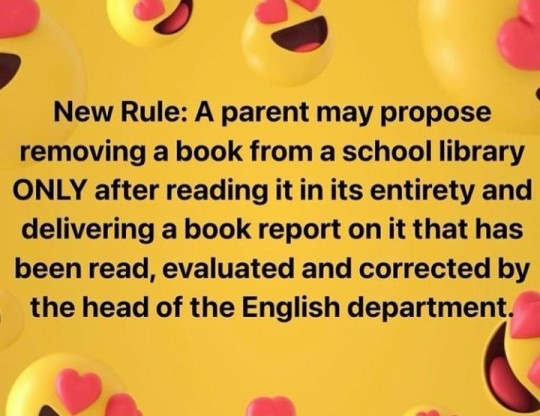
10 pages, no larger than 12-font (Times New Roman, of course), 1 inch margins, MLA.
PS: That Works Cited page better be spot on.
1K notes
·
View notes
Text
I trust nonfiction books so much more when I can flip to the back and see not only a glossary but an entire works cited section that's at least a good 6 pages long, and it's even formatted by chapter so you know exactly which section to reference??? Amazing. Show stopping. Would trust this random human with my nonexistent children.
2 notes
·
View notes
Text
Live fast die young leave an extensive list for further reading
5 notes
·
View notes
Text
hang on i gotta add that to my quirks cited real quick
4 notes
·
View notes
Text

Reading this with the CJtheX book club.
Chunk one includes the below writings, and here are my partially digested thoughts on each essay in this chunk.
Skywoman falling
"they could not even imagine what beneficial relations between their species and others might look like?"
I don't blame her for approaching the creation narrative in Genesis with this take, but it doesn't sound at all like Eve was banished just for tasting the fruit. The biblical scholars from whom I have learned have always maintained that this was the only fruit she couldn't have, and that she was tricked into it, and that not trusting God and his word was the sin. But Eve had been placed in the garden not just to be banished, but originally to be a gardener herself.
And then when she was later an exile, it didn't seem like it wasn't still gardening that she was supposed to do - it was just now a more unpleasant gardening.
This all reminds me of the Make Gifts for People advice that John Green gave in his one video a while ago.
I saw a video that then pushed me to a Ted talk about how we all can learn from indigenous people, but the speaker also said that being indigenous was not the thing that the descendants of colonizers should aim for. And I was confused by that, but accepted it as a consequence for the sins of those who came before me and whose actions I now benefit from, at a cost to others' ancestors.
For all of us, becoming indigenous to a place means living as if your children's future mattered, to take care of the land as if our lives, both material and spiritual, depended on it.
So when Kimmerer says this, I'm sort of lost. As a descendent of colonizers (or at least of white people who were favored after the Initial Colonizing),I don't really know what I'm supposed to do.
The council of pecans
Love the idea of mast fruiting. Interesting science there. I don't have much more thought on that particular essay though.
The gift of strawberries
For the plant to be sacred, it cannot be sold.
The connection between a gift and something sacred is category expanding for me. Will have to dig into why.
Hm. Ok. I recently received some birthday money in a card. I hate cards, and don't know how to handle them, because they are usually a decent paper and are sometimes quite pretty,but they have generic poems in them and I don't really want to keep a box of generic poem papers around just because they were once gifts. So when the money came and the cards came (and I had a shit birthday, but that wasn't important) I just grabbed the cash and recycled the cards, as has become my typical response to unwanted paper. And that felt shitty, but I didn't really know why. And I wanted to respond to my gift givers, but I didn't (and still don't) know how. This validated that conviction I had that it was shitty, and has me resolved to go call my grandparents.
The idea of a gift economy sounds like heaven. It feels like the early church's impromptu socialism, and like when I get to give lots of candy to kids on Halloween. It makes me sad that we don't practice it.
The Lewis Hyde quote about gift economies, where he notes that it is more in harmony with how nature itself behaves, it snagged my attention for a bit.
I struggle to understand how geese are offering their lives as a gift to us when they are shot down and hunted. It totally makes sense that she calls it a theft of the life of a chicken in a factory farmed cage, but is it not theft of life to kill and eat a wild goose? (Not a vegan out of lack of energy, but I totally understand how those with the executive function to be vegans would come to that conclusion. I can console myself that at least I don't eat a ton of meat myself, but it's not like that absolves me by any stretch.)
Much philosophy out there makes me think of what kind of World we have. This book has me thinking about what kind of World we should have cultivated, and has me more convicted than anything else, more aware of the need for justice and restoration. In light of this, it's hard to feel satisfied by any worldview that doesn't bring what we've done to our world back into line.
The commodity economy has been here on Turtle Island for four hundred years, eating up the white strawberries and everything else. But people have grown weary of the sour taste in their mouths.
An offering
The coffee feels like a tithe
The concept of ceremony bringing our attention to a part of reality is part of what has me still attending the Anglican church, even now, as I'm not certain whether I really believe in Christianity or if I just received it from our culture and assimilated to try to fit in. I could have forgone church entirely, but I was too frightened to totally do that, and anyway there's something about the ritual that feels Real in a way that the goddamn non-denominational church's worship didn't.
What else can you offer the earth, which has everything? What else can you give but something of yourself?
Asters and Goldenrod
I feel a parallel, in my autism and how I felt as a teen, to her experience of having her love of plants and desire for botanical knowledge get crushed because she didn't know the right words to communicate what she knew deeply. Something about that story and her emotion calls me back to wanting to study psychology because I care about people (when really I was lonely and wanted to understand them so I could not be lonely anymore. Also, special interest) and being told that wasn't a viable career option. Ugh.
Science as a way of knowing is too narrow for the task... I should have been told that my questions were bigger than science could touch.
I feel like this essay speaks to my thirst for understanding and concrete foundational truths about religion and worldview. Science is too narrow for it, but also I needed a time of testing what science (or I suppose, skeptical philosophy) is capable of doing for us in the area of worldview, and it has also been a great new environment in which to be absorbed.
I received some Goldenrod in my garden last year just by random chance. This has me wanting to put asters in as well, replacing the invasive honeysuckle bush that threatens to overgrow every few months.
Learning the grammar of animacy
The idea of scientists naming things has always brought my mind back to the Eden narrative, where Adam is assigned the task of naming the animals. Naming and gardening were the two things we were asked to do. It makes sense that science and art would be so captivating to us.
What lies beyond our grasp remains unnamed.
The boarding schools thing has me, a very left human, feeling like we need less government so they can never do something like that again. (But I know that's an emotional reaction - not really a solid national plan.)
I envy her ability to teach herself a language so important to her.
Fuckin love that Yawe means "to be" and sounds like Yahweh - "I am".
4 notes
·
View notes
Text
today in the "our lights in ashes lecture series", also known as "posts absolutely no one asked for": plants!
everything's blooming around me right now so I gotta. to me, setting is key and I have to believe in the place I'm reading or writing about. including local flora makes it feel distinct to me, and was the kind of thing I hoped contributed to making the setting come alive even if you don't know the area or the plants that come up
from chapter 1: They paced through the woods in sight of each other, moving in tandem while covering a wider swathe. Jack appeared in steady flashes between trees, shoes pressing down pine needles and packed dirt. The thick canopy lent the forest a purple gloom, while clusters of pipsissewa and ginseng dotted the lower brush with colour. The green of every leaf deepened as they traversed further into the woods.

these first two examples aren't heavy on symbolism, but they're pretty. and woods aren't only about trees. the lush undergrowth of a Virginia forest with ferns and flowers add such depth.
from chapter 3: One moment they drove through a low-country landscape of oatmeal-brown marsh grass, then they crossed the bridge and a city rose with its handsome old buildings and lush greenery like the Hanging Gardens of Babylon. Jack looked around with new eyes, taking in a city that entirely lacked the usual commotion and buzz. Shaded streets lined with Southern live oak, their dark reaching branches hanging with Spanish moss.
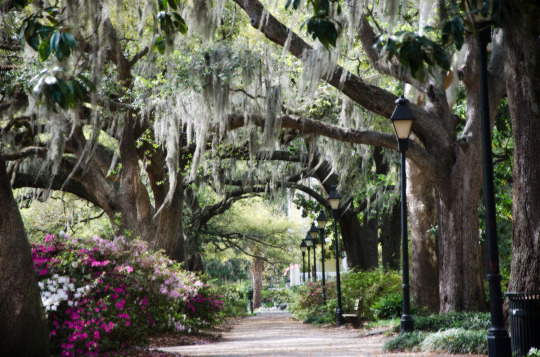
Southern live oak and Spanish moss! oh boy, you know you're in the South when. it's the way the live oak reaches out and the moss drapes over the branches like a ghost. it lends such a colour to the very atmosphere, this ancient and mysterious green-grey.
from chapter 5: They reached the gulch where the bodies had been found. The whole area crawled with kudzu, enshrouding the trees and the forest floor in vibrant green. An abandoned truck and an even older car had been lost to the gulch in ages past, and now the kudzu threatened to swallow them entire.

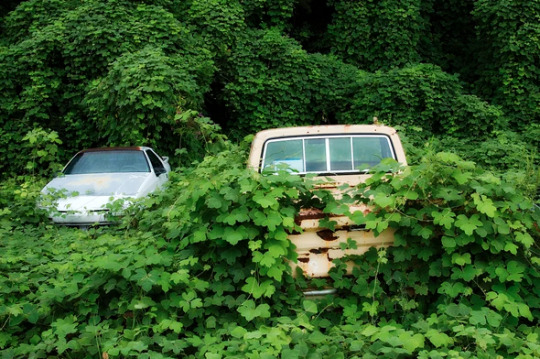
okay, now we're in to some more overt symbolism. kudzu, an invasive species, is known as "the vine that ate the South." it's fast-growing and can easily choke out other plants and block their access to resources. this is in a chapter about explicit prejudice and hatred, which endangers diversity and under which none of us can flourish. hatred is a poison and the rise of alt-right extremism concerns me. you want to see what will devour our society? kudzu doesn't seem so bad.
from chapter 6: The twins lived in the bayou, in a white, two-story house with a small porch that had the swing and another balcony on the floor above it. Tall trees shaded it all through the day, and azaleas grew abundantly around the porch steps.

so I'm very fond of azaleas. this was one of the flowers that had more traditional symbolism attached: they are seen to represent familial duty and homesickness, as well as wealth and elegance. this was a great fit for our semi-disinherited twins, Emory and Sawyer. they are also poisonous, which I like for representing the dark and dangerous strain of their familial past. the azaleas represent the way they are still attached to their mother despite everything, and the fact they bother to care for these flowers is a small nod to Mona's far more extensive garden in the next chapter.
from chapter 7: He eventually took a seat within a tiny enclosed arbor, where vines and flowers crawled over the surrounding latticework. A honeybee joined him, investigating the purple beautyberry and blazing star, carving a path through the world that told a story to anyone paying attention.

purple is frequently associated with witchcraft in spn, so I couldn't resist mentioning purple flowers in Mona's garden as a way to code her as magic. as it happens, bees also tend to love purple flowers so Cas isn't complaining. oh, and blazing star is sometimes also called "gayfeather" so there's something in that about gay angels because I'm very mature, I guess.
chapter 7: Golden afternoon light shone in shards through the leaves and boughs of the old magnolia trees, glinting in the glimpses of sky between grey tendrils of swaying Spanish moss.
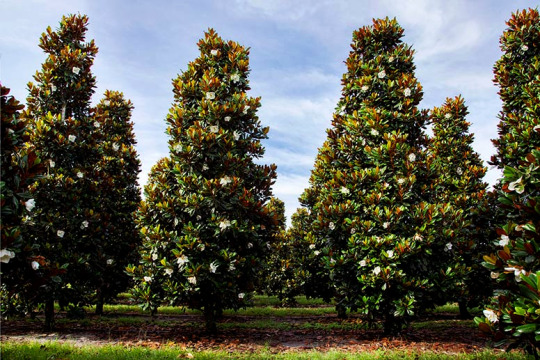
it just wouldn't be the South if there weren't magnolias. they wouldn't have been in bloom at the time that Dean and Cas are at Mona's, so I did not get to lean into the lovely scent as much as one would like. actually, I tried to be careful with what would theoretically be in bloom or berrying in autumn, when the story takes place. however anyone who knows more about plants must excuse if I stretched seasons too far, writers will absolutely push the limits for the sake of a story.
from chapter 8: He found the swinging sign of the Brass Lantern Inn, surrounded by feathery pink muhly grass.

look at this stuff. it's so dreamy. wispy as pink mist, then catching the light to look like tiny fireworks. the final chapter of our lights in ashes is all about dusk and dawn and is tinted with the colours of sunrise reflecting through the water, gold and pink and orange. (in the first chapter, the hope of daybreak doesn't save a boy from his fate. in the final chapter, daybreak fulfills its promise.) and there may not be fireworks for the Big Damn Kiss at the end, but maybe we got near enough.
#our lights in ashes#writing inspiration#works cited#flowers#southern gardens#southern gothic#THIS HAS BEEN A POST#like I don't even know who the target audience is for this#just me putting off other things I should be doing#our lights in ashes lecture series
14 notes
·
View notes
Photo
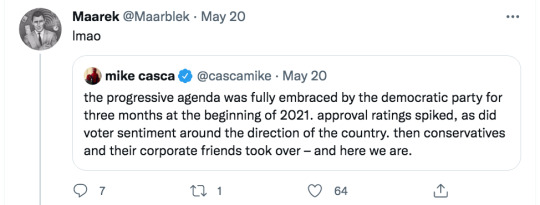
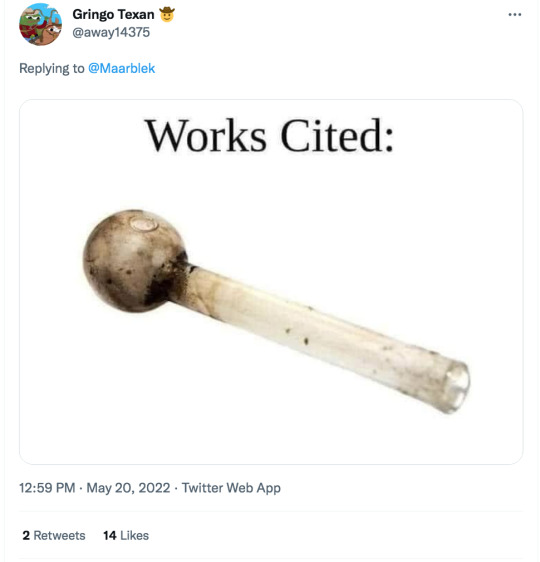
(link)
2 notes
·
View notes
Text
but if i gave up on being silly i wouldn't know how to be alive
17K notes
·
View notes
Text
Probably an unpopular opinion but I hate writing term papers fo academia, but of all things necessary manually writing the works cited/bibliography bothers me the least.
It's just following a formula and mindlessly typing and honestly quite lovely when the brain is 🌟foggy🌟 to remain somewhat productive.

#writing#academia#academic research#do not plagiarise#term papers#university#undergraduate#undergrad#student#works cited#bibliography#term paper#its about scottish identity in novels#flemington#violet jacob#writing like im running out of time#because i am
1 note
·
View note
Text
Works Cited
Bui, Thi. The Best We Could Do: An Illustrated Memoir. Harry N. Abrams, 2018.
McWilliams, Sally. “Precarious Memories and Affective Relationships in Thi Bui's The Best We Could Do.” Journal of Asian American Studies, vol. 22, no. 3, 2019, pp. 315-348. Project Muse.
Oh, Stella. “Birthing a Graphic Archive of Memory: Re-Viewing the Refugee Experience in Thi Bui’s The Best We Could Do.” Multi-Ethnic Literature of the U.S., vol. 45, no. 4, 2020, pp. 72-90. Project Muse.
0 notes
Text
Full Works Cited
•Chang, Franklin, Tomoko Tatsumi, Hirofumi Hayakawa, Misa Yoshizaki, and Natsuki Oka. “The Role of Parental Input in the Early Acquisition of Japanese Politeness Distinctions.” Collabra: Psychology 7, no. 1 (2021). https://doi.org/10.1525/collabra.18989.
•Dewaele, Jean-Marc. “Vous or Tu? Native and Non-Native Speakers of French on a Sociolinguistic Tightrope.” IRAL - International Review of Applied Linguistics in Language Teaching 42, no. 4 (2004). https://doi.org/10.1515/iral.2004.42.4.383.
•Fukushima, Miyuki, Susan F. Sharp, and Emiko Kobayashi. “Bond to Society, Collectivism, and Conformity: A Comparative Study of Japanese and American College Students.” Deviant Behavior 30, no. 5 (2009): 434–66. https://doi.org/10.1080/01639620802296212.
•Okumura, Yuko, Tessei Kobayashi, and Yuriko Oshima-Takane. “Child Language Development: The Differences between Japanese and English.” NTT Technical Review 14, no. 11 (November 2016). https://doi.org/https://www.ntt- review.jp/archive/ntttechnical.php?contents=ntr201611fa5.html.
•Palmer, Andie. “Child Language Acquisition & Socialization.” Anthr 208. presented at the eClass, November 20, 2022. posted: October 6th, 2022
•Slavova, Velina. “On Native Semantic Roles: Comparative Study Based on Data from Child Language Acquisition of English and French.” International Journal of Cognitive Research in Science, Engineering and Education 5, no. 2 (2017): 1–18. https://doi.org/10.5937/ijcrsee1702001s.
•Weems, Erica. “French Pronoun: When to Use ‘Tu’ and ‘Vous’?” The Glossika Blog. The GlossikaBlog, June 30, 2022. https://ai.glossika.com/blog/when-to-use-tu-and- when-to-use-vous.
1 note
·
View note
Text
fun tip for essays: if you don't need an in-text citation for the info, you don't need it in the works cited either. why? cuz you don't need to say where you got your info from if you don't talk about that specific info.
#citation#citing#writing#paper#essay#works cited#in-text citations#school#college#high school#university#academic writing
0 notes
Text
Blog #6 - Works Cited
Works Cited
Brown, Griffin. “Hope Makes a Hero.” Statesman, 15 Mar. 2022, https://www.statesmanshs.org/5998/opinions/hope-makes-a-hero/.
Early, Rosalind. “On Topic: Hope as an American Tradition - the Source - Washington University in St. Louis.” The Source, 11 Feb. 2021, https://source.wustl.edu/2018/08/hope-as-an-american-tradition/.
Waibel, Dan. “The Purpose and Significance of Superheroes in American Culture.” Medium, Medium, 13 Dec. 2018, https://medium.com/@dwaibel/the-purpose-and-significance-of-superheroes-in-american-culture-24ef12af19ff.
1 note
·
View note
Text
youtube
This is the video in which, well, many people bring valuable information. But in particular i received the introduction to the idea of discharge vs expression. CJ was talking about John Dewey around minute 40.
This also feels like it's related to the idea of Shipping art, which apparently Seth Godin talks about. I think.
#works cited#philosophy#cj the x#mia cole#art#YouTube#deconstruction#John Dewey#discharge vs expression
4 notes
·
View notes
Text
Works Cited
Adams, Geraldine Kendall. “A New Approach to Repatriation.” Museums Association, December 11, 2020. https://www.museumsassociation.org/museums-journal/features/2020/11/a-new-approach-to-repatriation/.
Ahmadi, Ali Abbas. “Should the British Museum Return Its Egyptian Collection?” The New Arab. The New Arab, December 13, 2019. https://english.alaraby.co.uk/analysis/should-british-museum-return-its-egyptian-collection.
Alberge, Dalya. “British Museum Is World's Largest Receiver of Stolen Goods, Says QC.” The Guardian. Guardian News and Media, November 4, 2019. https://www.theguardian.com/world/2019/nov/04/british-museum-is-worlds-largest-receiver-of-stolen-goods-says-qc.
“Annex III: Position Statement on Duties, Powers, Policies and Procedures in Relation to Restitution, Repatriation and Spoliation .” House of Commons. Parliament. Accessed August 18, 2022. https://publications.parliament.uk/pa/cm199900/cmselect/cmcumeds/371/0060805.htm.
Ayyad, Ibrahim. “Egypt Renews Demands to Retrieve Nefertiti Bust from Germany.” Al Monitor, October 1, 2020. https://www.al-monitor.com/originals/2020/10/egypt-germany-nefertiti-bust-claim-stolen-antiquities.html.
Fleary, Sinai. “Looted Benin Bronzes Can Be ‘Loaned’ Says British Museum.” Voice Online, March 3, 2022. https://www.voice-online.co.uk/news/uk-news/2022/03/03/looted-benin-bronzes-can-be-loaned-says-british-museum/.
Ghoshray, Saby. “Repatriation of the Kohinoor Diamond: Expanding the Legal Paradigm for Cultural Heritage.” Fordham International Law Journal, 6, 31, no. 3 (2007). https://ir.lawnet.fordham.edu/cgi/viewcontent.cgi?referer=https://www.google.com/&httpsredir=1&article=2098&cont.
Greenberger, Alex. “'Brooklyn Is Not for Sale': Decolonize This Place Leads Protest at Brooklyn Museum.” ARTnews.com. ARTnews.com, November 18, 2019. https://www.artnews.com/art-news/news/brooklyn-not-sale-decolonize-place-leads-protest-brooklyn-museum-10230/.
Killion, Thomas W. Opening Archaeology: Repatriation's Impact on Contemporary Research and Practice. Santa Fe, NM: School for Advanced Research Press, 2008.
Lonetree, Amy. Decolonizing Museums: Representing Native America in National and Tribal Museums. University of North Carolina Press, 2012. JSTOR, http://www.jstor.org/stable/10.5149/9780807837528_lonetree. Accessed 16 Aug. 2022.
Marcelo, Philip. “Return of Wounded Knee Artifacts Spotlights Slow Repatriation Pace for Native Americans.” USA Today. Gannett Satellite Information Network, July 30, 2022. https://www.usatoday.com/story/news/nation/2022/07/30/native-american-wounded-knee-artifacts-repatriation/10191921002/.
“Native American Graves Protection and Repatriation Act (U.S. National Park Service).” National Parks Service. U.S. Department of the Interior. Accessed August 17, 2022. https://www.nps.gov/subjects/nagpra/index.htm.
Polonsky, Naomi. “Hundreds Attend Guerrilla, Activist-Led Tour of Looted Artifacts at the British Museum.” Hyperallergic, December 18, 2018. https://hyperallergic.com/475256/hundreds-attend-guerilla-activist-led-tour-of-looted-artifacts-at-the-british-museum/?fbclid=IwAR0lqpgP1Ji_XJqMhCR0CJ-LY7ZcoLcWwlP-1ATi7u5--mQT4H4XAOAHlmA.
Porterfield, Carlie. “Europe's Museums, Collectors Are Returning Artifacts to Countries of Origin amid Fresh Scrutiny.” Forbes. Forbes Magazine, April 21, 2022. https://www.forbes.com/sites/carlieporterfield/2021/10/27/europes-museums-collectors-are-returning-artifacts-to-countries-of-origin-amid-fresh-scrutiny/?sh=16ceceaf675b.
Sánchez-Morales, Lara. “Laboratory & Curation in Archaeology.” Zoom, University of Texas at Austin, July 21, 2018.
Sánchez-Morales, Lara. “The Profession of Archaeology.” Zoom, University of Texas at Austin, July 13, 2018.
Tuck, Eve, and K. Wayne Yang. “Decolonization Is Not a Metaphor.” Decolonization: Indigeneity, Education & Society 1, no. 1 (2012): 1–40. https://jps.library.utoronto.ca/index.php/des/article/view/18630.
1 note
·
View note
